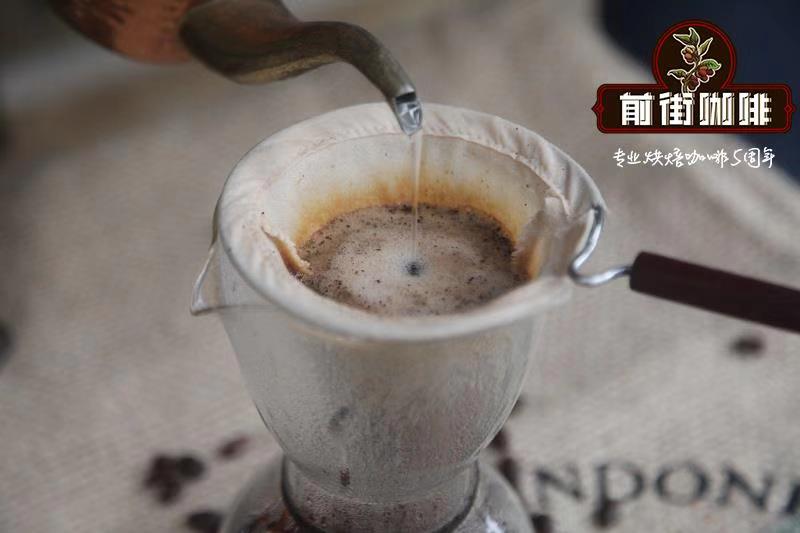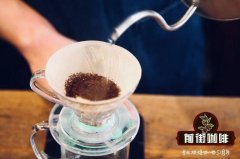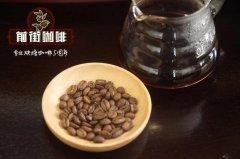What kind of coffee beans are made by hand? what kind of coffee beans can be made and tasted good?

Professional coffee knowledge exchange more coffee bean information please follow the coffee workshop (Wechat official account cafe_style)
70% of the determinants of a good cup of coffee come from the intrinsic quality of beans, while the key to the quality of beans lies in the varieties. Good varieties grow and blossom and bear fruit in a suitable microclimatic environment. After harvest, after proper post-processing (washing / sun / semi-washing / honey treatment, etc.), that is to say, good beans are made, which is why rose summer is more expensive than Kaddura in the same way in the same producing area. Today, we will trace back to the source, to fully understand the varieties of coffee, but also for the future purchase of coffee beans to do some reference.
Species and varieties of coffee
Coffee tree is a flowering plant of the genus Coffea of Rubiaceae. At present, there are about 120 species, ranging from small shrubs to 18-meter-tall trees. Wild coffee species grow irregularly in the tropics, and new species are still being discovered. Strictly speaking, only two major species of coffee are cultivated to produce coffee: Arabica coffee (Arabica) and Canifra coffee (English Canephora, often referred to as "Robusta coffee"). However, in order to meet the needs of domestic coffee consumption, a third species, Liberian coffee, has been planted in a small number of countries such as the Philippines.
Nearly 70% of the world's commercially grown coffee is Arabica coffee, with a total of 7 million tons of roasted coffee each year. Robusta coffee accounts for the rest of the market, mainly produced in Java, Sumatra and Vietnam in India, Indonesia and Vietnam, which contributes nearly half of the world's total production of Robusta coffee. It is the second largest coffee producer in the world after Brazil.
"Robusta" means strong and healthy, and as the name suggests, robusta coffee has better disease resistance than Arabica coffee. Part of the reason is that Robusta coffee has a higher caffeine content and has a stronger inhibitory effect on small pests. Robusta coffee is characterized by higher fruit yield per unit harvest period, and its ripe fruit can hang on trees for a long time, compared with Arabica coffee that falls to the ground if it is not harvested in time. Robusta coffee beans are smaller and thicker than Arabica beans, thicker but slightly less flavored. For this reason, small portions of robusta coffee are usually used to mix espresso. Italians attach particular importance to its high quality coffee fat and rich caffeine, resulting in the excellent effect of every coffee product.
You may have to ask, what's so good about Arabica coffee? There is no doubt that it has the best flavor. Arabica coffee plants bear more subtle fruit flavor, its varieties are widely distributed and clearly defined, and the appearance and style of Arabica coffee are distinctive. Most varieties of Arabica coffee are genetically mutated or improved by a cross between two patrilineal Arabica coffee, Tibica and bourbon. Tibica (usually Arabica) is the first coffee variety introduced from Ethiopia to Yemen and then to India. In 1718, Tibica species collected from Java were introduced into French Bourbon Island (now known as Reunion) 800km east of Madagascar in the Indian Ocean. Here the Tibica species abruptly became a new variety, that is, the later bourbon species. In today's coffee market, Tibica and bourbon are the largest varieties of Arabica coffee.
Some varieties are derived from natural gene mutations, while others are the products of artificial cross breeding or acquired breeding of native species. Arabica species are self-pollinating plants, and their genetic lineage should be quite pure. However, Tibika species and bourbon species have been brought to new countries, foreign climate conditions lead to natural gene mutations, and the characteristics of cultivated new varieties are mostly gratifying.
The story of robusta coffee is roughly the same, but it was not until 1895 that the species was officially classified into the botanical classification system (Arabica species was 1753). Robusta coffee is native to West Africa and has been grown in Java and spread all over the world. Like Arabica coffee, there are many varieties of robusta coffee, but most of them have a mediocre flavor and nothing to shine on.
END
Important Notice :
前街咖啡 FrontStreet Coffee has moved to new addredd:
FrontStreet Coffee Address: 315,Donghua East Road,GuangZhou
Tel:020 38364473
- Prev

What is the variety of Costa Rican costa coffee | what's the difference in the way you drink Mantenin coffee?
Professional coffee knowledge exchange more coffee bean information Please pay attention to the coffee workshop (Wechat official account cafe_style) full particles, ideal acidity, unique strong flavor Tarrazu of Costa Rica is one of the major coffee producers in the world, the coffee produced is light and pure in flavor and pleasant in aroma. The volcanic soil of Costa Rica is very fertile and has good drainage.
- Next

What kind of coffee is light in color? what if the coffee is light? how to fix it?
Professional coffee knowledge exchange more coffee bean information please follow the coffee workshop (Wechat official account cafe_style) what we often distinguish is the distinction between the cut-off method and the continuous water injection method. (the cut-off method means that after each lap, stop the water injection and let the liquid with coffee flavor drop most of the first, and then continue to inject, stop, drip, and repeat this process for several times.
Related
- Beginners will see the "Coffee pull flower" guide!
- What is the difference between ice blog purified milk and ordinary milk coffee?
- Why is the Philippines the largest producer of crops in Liberia?
- For coffee extraction, should the fine powder be retained?
- How does extracted espresso fill pressed powder? How much strength does it take to press the powder?
- How to make jasmine cold extract coffee? Is the jasmine + latte good?
- Will this little toy really make the coffee taste better? How does Lily Drip affect coffee extraction?
- Will the action of slapping the filter cup also affect coffee extraction?
- What's the difference between powder-to-water ratio and powder-to-liquid ratio?
- What is the Ethiopian local species? What does it have to do with Heirloom native species?

